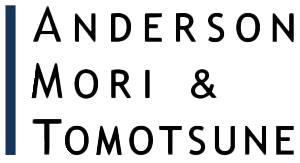In April 2023, GX League Phase 1 (pilot phase), a Japanese emissions trading system was launched, and in October 2023, the Tokyo Stock Exchange started trading J Credits. The use of carbon credits, etc. is important for achieving decarbonization of Japan, but there are also some issues.
In this newsletter, we will explain recent developments in Japanese and overseas carbon credit markets and examine how to deal with carbon credit trading.
1. Recent developments in Japan
(1) Green Transformation League ("GX League")
GX League was preliminarily launched in September 2022 and was officially launched in April 2023 based on "Carbon Credit Report"1 published by Ministry of Economy, Industry and Trade ("METI") in June 20222. Compared to other emission trading schemes (e.g., EUETS), GX League has unique aspects as set out below:
- Relationship among GX League, GX-ETS and Carbon Credit Markets
- It is understood that GX League is a platform in which any company/financial institution in Japan can join and contribute to drafting rules in connection with carbon credit trading in Japan. It is expected that leading Japanese companies/financial institutions will participate in GX League and disclose their targets via GX League Dashboard so that GHG reduction actions by other companies/financial institutions will be enhanced. As of June 30, 2023, more than 600 companies from many industries, such as manufacturing, service, and financial institution, were participating in GX League.
- GX League participants must participate in a voluntary
emissions trading system in Japan ("GX-ETS"). At the end
of September 2023, it is voluntary for each company to participate
in GX League/GX-ETS and/or to achieve its emission reduction
targets. However, according to materials published by GX League
Committee, it is suggested that certain compliance obligations to
achieve its emission reduction target might be imposed on each
participant in GX-ETS/GX League in or around 2026. Although it is
still subject to review of the detailed rules, the basic concept of
GX-ETS seems to be as follows:
- GX League participants will be required to set their own targets for direct/indirect emissions reductions in Japan and to calculate and report their actual amount of emissions.
- Sell-side: From 2030 onward, allowances will be allocated to certain GX League participants who will achieve GHG reduction/removal at a level which is higher than NDC equivalent (e.g., 46% GHG reduction by 2030). After the end of October 2024, the trading of allowances will be launched and such GX League participants will be able to sell such allowances to other GX League participants.
- Buy-side: If certain GX League participants will not be able to achieve GHG reduction/removal at a level which is higher than NDC equivalent, such GX League participants will need to take certain actions (including off-setting their GHG emissions against "eligible carbon credits" (including J-credits, JCM credits).
- Separate from GX League and GX-ETS, an emission trading system
in Japan 3 ("Carbon Trading Markets (TSE)") is
preliminary launched at Tokyo Stock Exchange in September It can be
said that Carbon Trading Markets (TSE) is a trading market in order
to (a) activate carbon credit tradings in Japan and (b) provide
price indications to various players in Japan/outside of Japan. The
differences between Carbon Trading Markets (TSE) and GX-ETS are as
follows:
- As of October 2023, only J Credits are traded in Carbon Trading Markets (TSE) on the Tokyo Stock Exchange.
- In order to become a participant of Carbon Trading Markets (TSE), it is necessary to apply to and be registered with the Tokyo Stock Exchange.
- Expected Timeline
It is expected that GX-ETS/GX League will be developed in a timeline set out below:- From April 2023 to March 2026: Phase 1 (GX League/GX-ETS will be operated on a voluntary basis);
- From April 2026 to March 2033: Phase 2 (GX League/GX-ETS will be operated with certain compliance obligations); and
- After April 2033: Phase 3 (GX League/GX-ETS will be operated with further developments (e.g., auction of allowances in energy sector)).
- Carbon credits to be traded at GX-ETS
GX-ETS plays a key role in Japanese carbon markets and one of the key questions is what kind of carbon credits can be traded at GX-ETS. It is a choice of policy makers in Japan, but any of the carbon credits set out below (including any token issued in connection with such carbon credits) can be traded at GX-ETS.
Table: Examples of carbon credits in international and domestic markets
PICHUR
- Allowances (chouka-sakugenwaku)
- Definition
According to materials published by GX League Committee, allowances (chouka- sakugenwaku) ("Allowances") means "allowances which will be granted by GX League Committee in connection with amount of GHG emission reductions which are achieved over a certain level (e.g., 46% reduction as compared to 2013 level (which is equivalent to NDC by Japanese Government). It can be said that Allowances may be similar to allowances under EUETS, subject to further developments. - Trading at GX-ETS
There may be no critical issue which would prevent trading of Allowances at GX-ETS so long as: (a) it is verified/issued by a public sector (e.g., Japanese Government); and (b) it is verified/issued in accordance with clear/fair rules. - Expected Timeline
It is expected that the timeline set out below will be adhered to:- By September 29, 2023: GX League participants will submit their targets.
- By the end of December 2023: Such targets will be announced on GX League Dashboard.
- At the end of October 2024: GX League participants will report on emissions reduction achieved in 2023.
- From October 2024 onward: Trading of allowances will be launched.
- J Credits
- Definition
J credits ("J Credits") mean "carbon credits issued by Japanese Government after Japanese Government verifies GHG reduction in accordance with the rules/methodologies made by the Japanese Government. - Trading at GX-ETS
According to materials published by GX League Committee, J Credits are one of "Qualified Carbon-Offset Credits" which can be used for off-setting purpose under GX League. Also, J Credits are allowed to be traded at Carbon Trading Markets (TSE).Joint Crediting Mechanism (JCM Credits)
- Definition
- Joint Crediting Mechanism (JCM Credits)
- Definition
Credits issued under Joint Crediting Mechanism ("JCM Credits") mean "credits issued by [a joint committee] organized by the Japanese Government and a Counterparty Government after such committee verifies GHG emission reduction in accordance with the rules made by the Japanese Government and the Counterparty Government". - Trading at GX-ETS
According to materials published by GX League Committee, JCM Credits are one of "Qualified Carbon-Offset Credits" which can be used for off-setting purpose under GX League. Although JCM Credits are not currently traded at Carbon Trading Markets (TSE), it is expected that JCM Credits will be traded at Carbon Trading Markets (TSE) in order to clarify the market price, etc. of JCM Credits and scale up volume of traded JCM Credits at Carbon Trading Markets (TSE).
- Definition
- Definition
To view the full article, click here.
Footnotes
1. https://www.meti.go.jp/shingikai/energy_environment/carbon_credit/pdf/20220627_2.pdf
2. Please refer to our newsletter published in June 2022 for further details in connection with Carbon Credit Report.
https://www.amt-law.com/asset/pdf/bulletins12_pdf/220629_en.pdf
3. Please refer to JPX website below for further details. https://www.jpx.co.jp/english/corporate/news/news-releases/0060/20220922-01.html
4. The J-Credit Scheme is designed to certify the amount of greenhouse gas emissions reduced and removed by sinks within Japan.
https://japancredit.go.jp/english/
5. JCM is a mechanism under which: (i) Japanese Government and companies provide low carbon technologies to a partner country and a company located in such partner country that operate certain GHG reduction projects; and (ii) certain carbon credits are granted to such GHG reduction projects.
6. J Blue Credit is a mechanism which is operated by Japan Blue Economy Association which focuses on blue carbon (please refer to the link below) (Japanese language only).
https://www.blueeconomy.jp/credit/
7. Voluntary carbon credits include Verified Carbon Standard(VCS), Gold Standard(GS), American Carbon Registry(ACR) and Climate Action Reserve (CAR)
The content of this article is intended to provide a general guide to the subject matter. Specialist advice should be sought about your specific circumstances.



